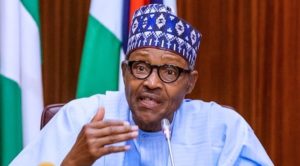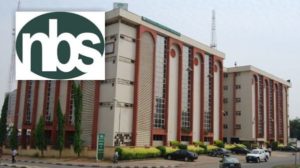Official data from the Nigeria Bureau of Statistics (NBS) has shown that the nation’s core inflation increased by 18.17 per cent (year-on-year) in March 2021. This is 0.82 per cent points higher than the 17.33 per cent rate recorded in February 2021.

Nigeria’s Inflation has been on a steady increase for about a year; despite the country’s exit from recession in the fourth quarter of 2020, and the latest inflation figures are the worst the country has recorded since exiting recession in 2017.
On a month-on-month basis, the headline index increased by 1.56 per cent in March 2021. This is 0.02 percentage points higher than the rate recorded in February 2021 (1.54 per cent).
Nigeria is grappling with multiple economic challenges of shortage in the food supply chain caused by banditry, the impact of COVID-19 and the devaluation of the Naira. Last month, the Central Bank of Nigeria (CBN) held all monetary policy parameters constant around the monetary policy rate of 11.5 per cent.
The percentage change in the average composite consumer price index (CPI) which measures inflation for the twelve months ending March 2021, over the average of the CPI for the previous twelve months period was 14.55 per cent, representing a 0.50 per cent point increase over 14.05 per cent recorded in February 2021.
The urban inflation rate increased by 18.76 per cent (year-on-year) in March 2021 from 17.92 per cent recorded in February 2021, while the rural inflation rate increased by 17.60 per cent in March 2021 from 16.77 per cent in February 2021.
The urban index rose by 1.60 per cent in March 2021, on a month-on-month basis, up by 0.02 compared to the rate recorded in February 2021, while the rural index also rose by 1.52 per cent in March 2021, up by 0.02 compared to the rate that was recorded in February 2021 (1.50 per cent).
The corresponding twelve-month year-on-year average percentage change for the urban index is 15.15 per cent in March 2021. This is higher than 14.66 per cent reported in February 2021, while the corresponding rural inflation rate in March 2021 is 13.99 per cent compared to 13.48 per cent recorded in February 2021.
However, Prices of food, an item that is currently on the rise has been identified as the major factor pushing Nigeria’s inflation figures upwards.
Experts attribute the surge in food prices to the worsening insecurity in the country especially the northern region.
Food is the critical component exerting the greatest pressure on inflation. This may not be unconnected with insecurity in most parts of the country which affected agriculture immensely.
Meanwhile, the nation’s statistics agency has also said that the Nigerian Economy real Gross Domestic growth dropped by -1.92 per cent at the end of 2020.

In its latest report on the economy NBS said, “In the third quarter of 2020, Nigeria’s real GDP at basic prices grew by -3.62 per cent on a year on year basis, marking a second consecutive quarter of negative real GDP growth after -6.10 per cent recorded in the second quarter (Q2).
In the fourth quarter of 2020 however, growth turned positive, recording 0.11 per cent in Q4 year on year. Nevertheless, the negative quarterly growth rates recorded in Q2 and Q3 2020 resulted in an annual growth rate of -1.92 per cent for 2020, compared to 2.27 per cent recorded in 2019.
Compared to the third and fourth quarters of 2019, the growth performance in 2020 was slower by -5.90 per cent points and -2.44 per cent points respectively.
It also said, “Household Consumption Expenditure, in Q3 and Q4 2020 grew by 6.10 per cent and 16.59 per cent in real terms, year on year. For 2020, the annual growth rate in real household consumption expenditure stood at 0.81 per cent compared to -1.06 per cent in 2019.
Government Consumption Expenditure recorded growth rates at 99.18 per cent and 12.13 per cent in Q3 and Q4 2020 respectively, year on year, while the annual growth rate stood at 61.58 per cent in 2020 compared to 8.78 per cent in 2019”.
According to the report “Net Exports recorded positive growth rates in the first two quarters of 2020 but turned negative in the third and fourth quarters of 2020. Net exports grew in real terms in Q3 and Q4 2020 by – 52.39 per cent and-72.61 per cent respectively.
As a result, on an annual basis, net exports recorded a growth rate of -29.55 per cent in 2020 compared to 7.64 per cent recorded in 2019. National Disposable Income grew by 4.44 per cent in the third quarter of 2020 and 3.13 per cent in the fourth quarter of 2020. For the annual figure in 2020, growth in national disposable income stood at 3.34 per cent compared to 0.35 per cent in 2019.
Compensation of Employees, during the third and fourth quarters of 2020 grew by -2.32 per cent, and 6.36per cent respectively in real terms on year on year basis. For 2020, the growth rate stood at 0.96 per cent compared to 8.99 per cent in 2019.
It said that Household Consumption accounted for the largest share of real Gross Domestic Product at market prices, representing 58.09 per cent and 60.43 per cent in Q3 and Q4 2019 respectively, compared to 63.63 per cent and 70.45 per cent in the corresponding quarters of 2020.
Net Exports, which represented 11.00 per cent of total real GDP at market prices in Q3 2020, however, declined considerably in Q4 to 4.65 per cent. The share of General Government Consumption expenditure represented 10.43 per cent in Q3 but fell to 7.14 per cent in Q4 2020.
Gross Fixed Capital Formation accounted for 13.24 per cent of real GDP in Q3, rising to 14.91 per cent in Q4 2020. The share of Non-Profit Institutions Serving Households (NPISH) rose from less than 1per cent in Q1 and Q2 2020 to 1.30 per cent in Q3 and 2.19 per cent in Q4 2020. For the first time, NPISH had a share above 1 per cent arising from interventions on COVID-19 pandemic”.